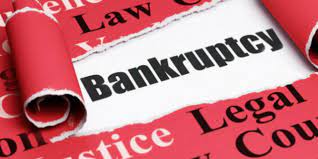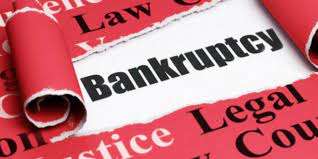Acts of Bankruptcy – s40(1)(c) Bankruptcy Act 1966.
How does a Bankruptcy Notices under the Bankruptcy Act 1966 work?
5 min read
Mark Smith : April 7, 2021 9:57:47 AM AEST

How does a Bankruptcy Notices under the Bankruptcy Act 1966 work?
(1) A debtor commits an act of bankruptcy in each of the following cases: ….
(b) if in Australia or elsewhere:
(i) he or she makes a conveyance, transfer, settlement or other disposition of his or her property or of any part of his or her property;
(ii) he or she creates a charge on his or her property or on any part of his or her property;
(iii) he or she makes a payment; or
(iv) he or she incurs an obligation;
that would, if he or she became a bankrupt, be void as against the trustee;
Source: http://classic.austlii.edu.au/au/legis/cth/consol_act/ba1966142/s40.html
What is a Bankruptcy Notices under the Bankruptcy Act 1966? The Act defines Bankruptcy Notices as follows:
Do you have a problem with a Bankruptcy Notices? Have you been served a Bankruptcy Notices? Does someone owe you money and you’d like to issue a Bankruptcy Notices?
Any questions about Bankruptcy Notices? Live chat with us in the bottom right corner or call us on 1300-327123 till late, or alternatively complete the form below and we’ll reply to you promptly.
Watch our video tutorial, live chat with us in the bottom right corner or call us on 1300-327123 till late.
We offer a free first appointment to anyone who is in financial trouble and can assist and advise on any Bankruptcy Notices or a related matter. To book your free appointment – click here.

To learn more about Mark Smith, his training and expertise – click here to go to his profile page
Follow Mark on Twitter: https://twitter.com/mrmarkjsmith
welcome back mark smith here from business asset protection we’re a division of dc partners solutions uh we’re having a look at s40 of the bankruptcy act. and we’re actually into part 3.
so today we’re looking at s40(1)(b) and we’re looking at transactions that are voidable against your future bankruptcy trustee.
okay so here we are in s40 and we’re going to be nice and familiar.
again if you’re looking at these make sure you’re looking at the most recently in force
version of the bankruptcy act 1966.
because it does change all the time. even if you google it you will probably come to the wrong version. so to get to that latest version, go to this series,
you can just click on view series and view the latest. and we’re going to administration proceedings there you go s40. so we’re looking at section today well we’re looking at s40(1)(b). so this is where a debtor commits an act of bankruptcy. in each of the following. so there’s many many many of these and this particular one we’re looking at today s40(1)(b). IF in australia or elsewhere he or she makes a conveyance. now we have a look at the definition of conveyance and i’ve got the definition up there for you to have another look at it’s it’s a way of disposing of or getting rid of makes a conveyance transfer settlement that may have a particular meaning. so we should we should look up a settlement,
uh or other disposition. so that leaves it very open. it’s another way of disposing of his or her property, or of any part. so you just get rid of the juices part. or a small part. or any part of his or her property. so it must be his or hers to begin with. and it’s disposed of um in australia or elsewhere you can be a timbuktu.
you could be on the moon. it wouldn’t matter where it was. so that’s only that’s only part one,
way number one. he or she creates a charge on his or her property. now here we go we looked at this in up. above we said that that wasn’t necessarily to do with security?
but here it’s where he or she creates a charge on his or her property? and we should again, very technical. but what is what does the word charge mean? we should have a look at this and i’ll try and pop that definition up over my shoulder. here so you can have a look. he or she makes a payment.
BROAD. or he or she incurs an obligation. so you go and borrow 100 million dollars when you know there’s no possible way that you could uh service it. so you get you charge on your property. you make a payment. you give away 5 million bucks. and in circumstances where you can’t pay your other bills. these would be um, sorry so, if in australia they do all these things, that would IF he or she became bankrupt, IF he or she became bankrupt would be void as against the trustees. so this now brings us into s120, s121 and s122. these voidable transactions. so it’s it’s a absolute pandora’s box and just looking further at this word charge, i’ve done some research off-air. and it would appear to me that there’s a very broad interpretation of the word charge. so it basically is going to be mortgage or indebtedness or liability. you could even think of it in terms of hocking. uh you’re going to hock some piece of property uh. it could be big or small. it could be centrepoint tower. you could be you you’ll hock your car um. you create a charge in circumstances that would IF you became bankrupt, be void against your trustee. so it’s something that can be unraveled at at a later point? very broad. very very very broad. so we’re going to have a look at um we haven’t got into voidable transactions. there is, we’re only at at s40(1)(b). so we’ve had a look at clause g. which is bankruptcy notices. uh we’ve had a look at clause (a). if you make a conveyance um for the benefit of your creditors generally. and also these are the ones that would be void uh as against your trustee. so there’s a lot more to go through. and i hope you’re getting the gist of just how broad these powers are? so if you’re in the position where someone has served a bankruptcy notice on you? you think you’re insolvent? you can’t pay your bills? or you’ve got someone else who, you’re a small business? and you’ve got someone that owes you money? and someone’s making payments, incurring obligations, creating charges on their properties, conveying parts of their property, or all of their property? um it’s, it would be really good to talk to you. um give us a call on 1300-327123. uh chat with us at the website, using the tools down in the bottom right hand corner of website. this one, bottom right hand corner uh on our webpage www.dcpartners.solutions – we’ve got an instant message tool .
there you can upload your documents. um as whether you’re, you know you’ve been served a bankruptcy notice? or you’ve got someone who’s indebted to you? and IF you’re looking for someone that’s very very skilled at this debt recovery stuff. so um come and have a talk to us. the first meeting’s obligation free. won’t cost you anything. and we’ll tell you uh very clearly very quickly whether we can or we might be able to help you. we we may not be able to say yes, we definitely can help you but we can give you a clear indication of whether we think we might be able to help you. so happy easter.
today’s the friday the 2nd of april 2021. this is probably going to air on the 3rd April 2021, um but we’re available uh you know very long hours, money never sleeps so they say uh – 1300-327123. or use the instant message chat uh tool uh in the bottom right corner of our screen on www.dcpartners.solutions
so thanks for tuning in uh
next we’re going to get into section 40(1)(c) of the Bankruptcy Act.
many many other exciting ways uh that you can um uh give the strong hint that you might have committed an act of bankruptcy
thanks very much. 1300-327123 or chat with us bottom right corner of our screen … www.dcpartners.solutions

How does a Bankruptcy Notices under the Bankruptcy Act 1966 work?

How does a Bankruptcy Notices under the Bankruptcy Act 1966 work?

How does a Bankruptcy Notices under the Bankruptcy Act 1966 work?

How does a Bankruptcy Notices under the Bankruptcy Act 1966 work?

How does a Bankruptcy Notices under the Bankruptcy Act 1966 work?

How does aBankruptcy Notices under the Bankruptcy Act 1966 work?
BANKRUPTCY ACT 1966 – SECT 188 Debtor may authorise trustee or solicitor to be controlling trustee

2 min read
About Direct Fibreglass Pools is the business name of Richard Andrew Mirosevich. Mirosevich is a frequent litigant. More information on...

1 min read
Public Reviews As at 10/2/2024. Source : https://www.facebook.com/groups/1407260559603442/search/?q=mirosevich Mabel R (Name...